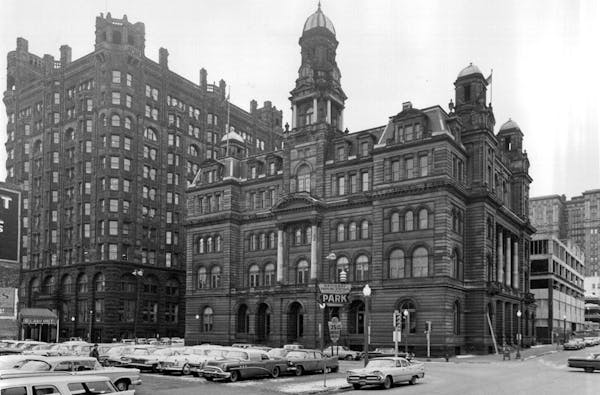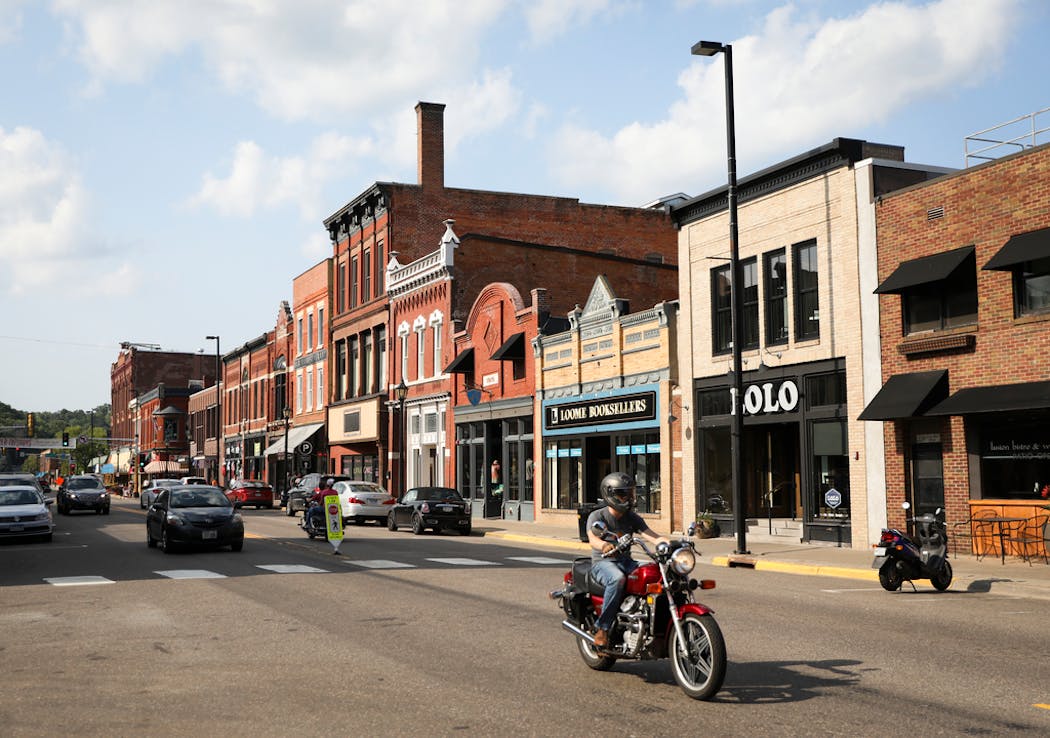If you're a city dweller, you may not go to a small town in Minnesota's lake country very often, unless you drive through a string of them on your way to the cabin.
Small towns are always changing, of course, but we like to imagine them as tidy, attractive, semi-bustling mini-cities, the kind you might come across in an old postcard.
You know, the "Mayberry R.F.D." kind of town — the bank with the Roman columns and a few stores with up-to-date metal facades draped over the old brick and a custom sign proclaiming the owners' name in script. (The locals knew Howard's was for women's clothes, Iverson's for men's.)
There might be a small department store, founded decades ago, where the farm kids were taken to get school clothes and uncomfortable shoes. It would have been an all-day trip, ending with a frosty pop at the drugstore counter, or perhaps a movie at the theater with the tall marquee.
If the town was big enough, there would be ambassadors from the world beyond: Rexall, an Ace or a True Value, a laundromat, a Zenith or Philco for appliance repair. If it were new enough, it would have a drive-in theater on the outskirts. If it were big enough, it would have its own paper. If it were old enough, it would have a graveyard where the names on the oldest stones had been almost erased by the wind.
But small towns have evolved, and Dale Mulfinger has watched that evolution. Mulfinger, a Minnesota architect and co-founder of SALA Architects, is a self-styled "cabinologist." He's written five books on cabins and he's driven the state — from small town to small town — to visit cabins, including his own.
How does he describe the change on Main Street in Small Town, Minn.?
"Some have died out, some have flourished, some changed in composition — that's the nature of small towns," he said. "They no longer have the hardware store. It closed, and then it was an inexpensive antique store."
"Now the antique stores are going away," Mulfinger said, "because this generation isn't interested in antiques. So now it's an upscale coffee shop."
"The hardware store is not downtown, but it's on the edge of town, in a big box store."
That's where you'll find more goods, more variety, good prices, bounteous parking. If the price of convenience is the loss of the downtown hardware store, well, that's how it goes.
In some towns, he's seen a big shift, in that Main Street is aiming to fill the needs of the people who may not live there year-round.
Mulfinger said he's seen a major change on Main Street.
"I would say the change is relying more on that tourist dollar, and that's seasonal. There's less retail that's just being supported by townies and farm people." He says the farms used to be 80 acres, now they're sometimes 8,000 acres with one family, so the density is smaller.
But he sees a bright spot in the evolution of small towns.
"A younger group of people are going back into these towns, because they have less attraction to the bigger cities," he said.
Those young people aren't necessarily strangers, either.
"Many of those 6-1-2ers have a connection to those small towns," said Mulfinger. "They're not total aliens, with no connection, more likely to be someone coming back to the town."
The pandemic has created a dilemma in lake country. Some small towns are divided about how much to welcome city dwellers.
"But they more than welcome the dollars," he said.
COVID-19 has taught many of us that it's possible to work remotely. That may lead to a minor exodus from the cities, and some people will choose to live permanently in Minnesota's small towns.
Does that mean that the hardware store, the drugstore, the movie theater and the bank (with or without Roman columns) will return to Main Street? It's hard to say how an exodus of Twin Citians would change small-town culture. But it probably won't look like Mayberry.
Singing, ceremonies and straw hats: Olympics opening ceremony in Tahiti centers Polynesian culture

Three 101-year-old friends recall fond memories in 1940s Alexandria
Celine Dion makes musical comeback at Paris Olympics with Eiffel Tower serenade





